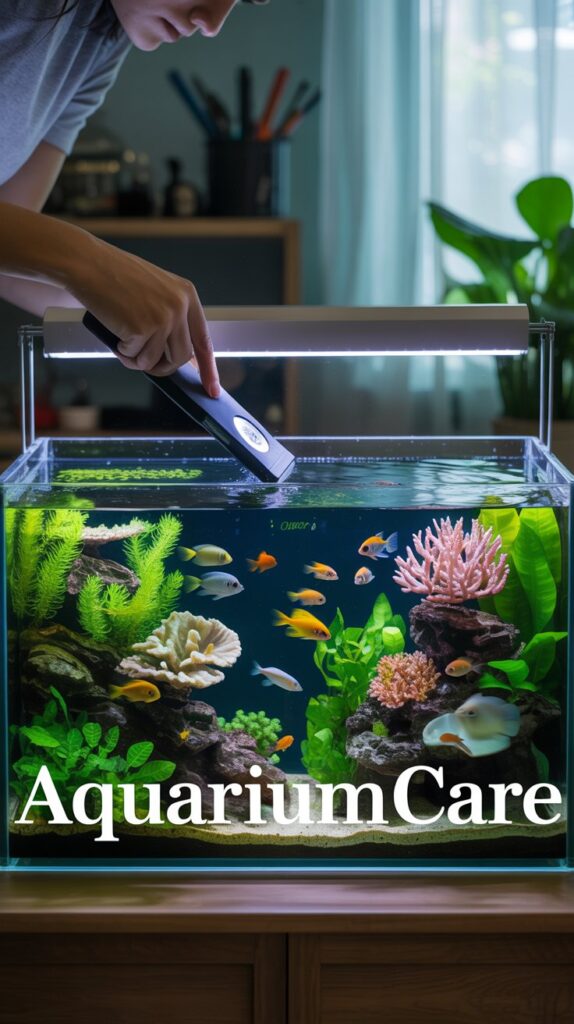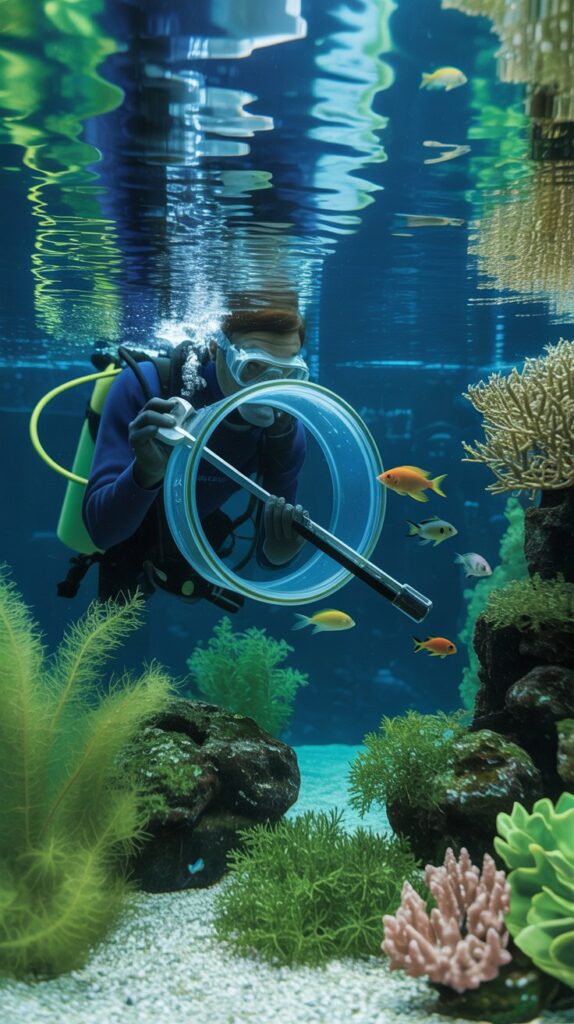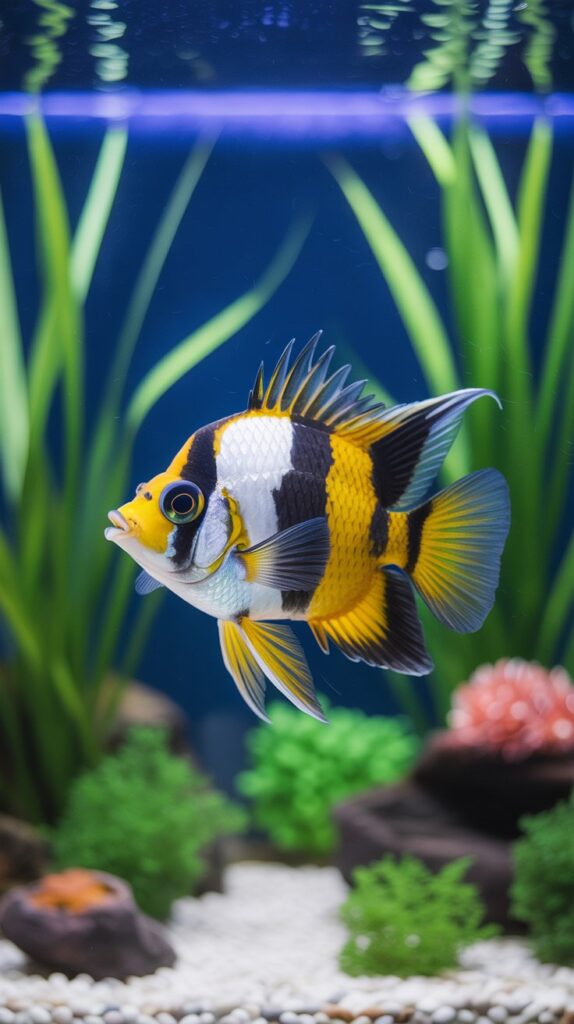Fish aquarium maintenance is the backbone of a thriving aquatic environment. Whether you keep freshwater guppies, colorful tetras, or exotic marine fish, the key to their well-being is a clean, stable, and well-maintained aquarium. Many beginners believe that once the tank is set up, fish will thrive on their own, but in reality, aquariums require consistent care to mimic natural habitats and prevent health problems. Neglecting maintenance can lead to poor water quality, algae blooms, fish diseases, and even the loss of your aquatic pets. This guide will walk you through everything you need to know about fish aquarium maintenance, from daily tasks to long-term upkeep.
Why Fish Aquarium Maintenance Is Important
A fish aquarium is a closed ecosystem, meaning waste, uneaten food, and other debris do not simply disappear as they might in the wild. Without proper maintenance, harmful substances like ammonia, nitrites, and nitrates build up and become toxic to fish. Regular care ensures water parameters remain stable, oxygen levels stay high, and the tank environment supports healthy fish behavior, strong immune systems, and vibrant colors. A clean aquarium also enhances the viewing experience, allowing you to enjoy the beauty of your fish without unsightly algae or cloudy water.
Essential Aquarium Maintenance Tools

Before starting your maintenance routine, it is important to have the right tools on hand. Common aquarium maintenance equipment includes an algae scraper or magnet cleaner for glass cleaning, a gravel vacuum or siphon for substrate cleaning, a water testing kit for checking pH, ammonia, nitrite, and nitrate levels, a bucket specifically for aquarium water changes, a fish net for safe fish handling, an aquarium-safe sponge, and a thermometer to monitor temperature. Having these tools within reach will make maintenance faster, easier, and more efficient.
Daily Aquarium Maintenance Tasks
Daily fish aquarium maintenance is relatively simple but crucial for long-term stability. Begin by visually inspecting your fish for signs of stress, disease, or unusual behavior. Check if all fish are active, feeding well, and free from visible symptoms such as torn fins, spots, or discoloration. Monitor water temperature to ensure it remains within the ideal range for your fish species. Feed fish only the amount they can consume within a few minutes to prevent leftover food from decaying and affecting water quality. Also, observe the functioning of equipment such as filters, heaters, and lights to ensure they are operating correctly.
Weekly Aquarium Maintenance Tasks

Weekly maintenance involves slightly more work but plays a vital role in maintaining a healthy aquarium. Perform a partial water change of around 20–30% to remove waste and replenish essential minerals. Use a gravel vacuum to clean the substrate while siphoning water, removing uneaten food and fish waste that accumulate at the bottom. Gently clean aquarium glass with an algae scraper or magnetic cleaner to keep it free of algae buildup. Test water parameters using a test kit to check pH, ammonia, nitrite, and nitrate levels. If necessary, adjust parameters through water changes or chemical treatments. Trim and prune live plants to promote healthy growth and prevent overgrowth from blocking light.
Monthly Aquarium Maintenance Tasks
Monthly fish aquarium maintenance often focuses on cleaning and inspecting equipment. Rinse filter media in old aquarium water to remove debris without killing beneficial bacteria. Never wash filter media with tap water as chlorine can destroy beneficial microorganisms essential for biological filtration. Inspect hoses, tubing, and air stones for blockages or wear. Replace carbon or other chemical filtration media if needed. Check light bulbs or LEDs for proper operation and replace them when they lose brightness. Wipe down the outside of the aquarium with an aquarium-safe cleaner to remove dust and fingerprints.
Controlling Algae in Aquariums
Algae growth is natural in aquariums, but excessive algae can make the tank unsightly and reduce water quality. Control algae by avoiding overfeeding, limiting direct sunlight exposure, and ensuring your aquarium light is on for no more than 8–10 hours per day. Adding algae-eating fish or invertebrates such as Siamese algae eaters, otocinclus catfish, or snails can help keep algae under control naturally. Regular cleaning of the glass, decorations, and plants will also prevent algae from spreading excessively.
Maintaining Good Water Quality

Water quality is the most important factor in aquarium maintenance. Testing water regularly ensures that harmful toxins are kept at safe levels. Ammonia and nitrites should always be at 0 ppm, while nitrates should be kept below 40 ppm for freshwater and even lower for marine tanks. Stable pH is essential for fish health, and the ideal range depends on the species you keep. Avoid sudden water chemistry changes by making gradual adjustments during water changes. If tap water contains chlorine or chloramine, always treat it with a water conditioner before adding it to the aquarium.
Caring for Live Plants
If your aquarium contains live plants, maintenance involves more than just keeping the water clean. Healthy plants require proper lighting, nutrient supplementation, and pruning. Provide the right type and intensity of light for your plant species. Use liquid fertilizers or root tabs to supply nutrients such as iron and potassium. Remove decaying leaves promptly to prevent water contamination. Live plants help improve water quality by absorbing nitrates and producing oxygen, but they also require consistent care to remain lush and vibrant.
Cleaning Aquarium Decorations

Over time, aquarium decorations, rocks, and driftwood can accumulate algae and debris. During water changes, remove decorations as needed and gently scrub them with an aquarium-safe brush. Avoid using soap or detergents, as even small residues can be harmful to fish. If stubborn algae remain, soak decorations in a diluted bleach solution for 10–15 minutes, then rinse thoroughly and soak in dechlorinated water before returning them to the tank.
Preventing and Managing Fish Diseases
Healthy water conditions greatly reduce the risk of fish diseases, but prevention also involves quarantining new fish before introducing them to the main aquarium. A separate quarantine tank allows you to observe new arrivals for signs of illness and treat them if necessary. Maintain good hygiene by washing hands before and after handling aquarium equipment. If a disease outbreak occurs, identify the cause, treat affected fish promptly, and review your maintenance practices to prevent future issues.
Seasonal Aquarium Maintenance
Some maintenance tasks are seasonal, such as adjusting tank heaters during winter to maintain stable temperatures or using fans and chillers during summer to prevent overheating. Seasonal cleaning of filters, replacement of worn equipment, and a thorough check of tank seals and lighting systems will keep your aquarium in top condition year-round.
Tips for Efficient Aquarium Maintenance
Set a consistent schedule to ensure maintenance tasks are not overlooked. Keep a maintenance log to track water parameters, cleaning dates, and equipment checks. Use timers for lights to maintain consistent day/night cycles for your fish and plants. Automate some processes, such as top-off systems for evaporated water, to reduce manual work. Involve family members in small tasks like feeding or cleaning glass to share responsibilities and make aquarium care more enjoyable.
Common Mistakes in Aquarium Maintenance
Many beginners make the mistake of overcleaning, which can remove beneficial bacteria and destabilize the tank. Avoid replacing all filter media at once, as this can disrupt the nitrogen cycle. Overfeeding is another common problem that quickly leads to water pollution. Skipping water changes or delaying maintenance often results in a buildup of harmful substances, leading to fish stress and illness. Using untreated tap water can introduce chlorine or heavy metals, harming fish and plants. Awareness of these mistakes helps prevent costly errors.
Eco-Friendly Aquarium Maintenance Practices
Eco-friendly maintenance focuses on reducing waste and conserving resources. Use reusable cleaning tools instead of disposable pads, recycle old aquarium water by using it to water plants, and choose energy-efficient lighting and pumps. Avoid overstocking your tank, as fewer fish mean less waste and lower maintenance needs. When disposing of unwanted fish or plants, never release them into natural water bodies to prevent ecological harm.
Advanced Aquarium Maintenance for Large or Specialized Tanks
Larger aquariums and specialized setups, such as reef tanks, require additional care. Reef tanks need precise control of salinity, calcium, and alkalinity levels, while large freshwater aquariums demand more powerful filtration and regular deep cleaning. Advanced hobbyists may use automatic dosing systems, protein skimmers, and advanced filtration setups to maintain water stability. Monitoring with digital sensors and apps can also make maintenance more accurate and less time-consuming.
FAQs About Fish Aquarium Maintenance
Q1: How often should I change the water in my fish tank?
A partial water change of 20–30% once a week is recommended for most aquariums.
Q2: Do I need to clean the filter every week?
No, clean filter media monthly or when water flow decreases, and always rinse it in old tank water.
Q3: Can I use tap water for my aquarium?
Yes, but it must be treated with a water conditioner to remove chlorine and chloramine.
Q4: How do I keep algae under control?
Avoid overfeeding, limit light exposure, add algae-eating species, and clean glass regularly.
Q5: What is the most important part of aquarium maintenance?
Maintaining stable water quality through regular testing and water changes is the most important factor.

